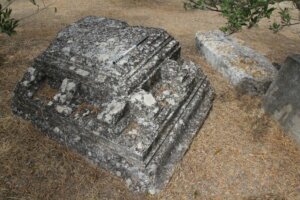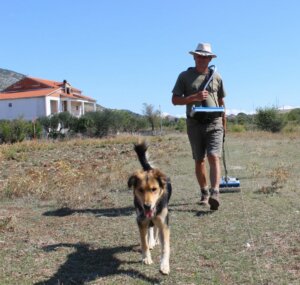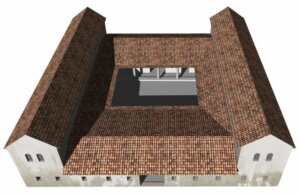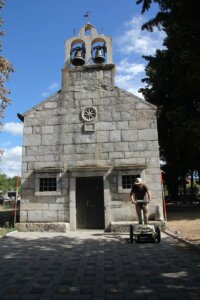City centre of Municipium Riditarum located?

21 10 2022
Category: Adriatic, Croatia, Research results
In Dalmatia, Croatia, thanks to GPR research and LIDAR data analysis, archaeologists have located the possible centre of the Roman city of Rider (Municipium Riditarum)
In the town of Danilo, about 15 km from the coastal town of Šibenik, in Dalmatia (Croatia), in the 1950s, archaeological excavations related to the construction of a water supply system were started. Hundreds of Roman inscriptions were unearthed during subsequent systematic excavations, several of which mention Municipium Riditarum, a Roman city founded somewhere in Danilo, in the area of the local Iron Age community of the Riditae, a tribe of the Delmatae.

View of the valley currently occupied by the contemporary village of Danilo, in ancient times by the town of Rider / Municipium Riditarum (photo F. Welc).

A fragment of the decorated entablature of a monumental Roman temple, excavated in a medieval cemetery in the 1950s in the vicinity of the church in Danilo (Photo by F. Welc).
Since the 1950s, archaeological work has focused on the environs of the present-day cemetery and the Church of St. Daniel, situated in the eastern part of the village of Danilo. During these excavations – as Dr. Toni Brajković of the Šibenik Town Museum explains – a vast late antique and Medieval cemetery was uncovered within the relics of Roman buildings, i.e. a bath complex and a large building with a central courtyard and a portico surrounded by numerous rooms. Within the graves’ structure a large number of reused early Roman funerary monuments were uncovered, as well as large blocks of stone with architectural decorations and a large column. The sheer size of these elements indicated that somewhere near the cemetery there must have been a monumental building, part of the complex of buildings surrounding the forum of the former Municipium Riditarum. However, the conducted excavations have not yet determined its location, as emphasizes prof. Fabian Welc.
Polish-Croatian research

GPR research of the area around the cemetery in Danilo (Photo by A. Konestra).
A joint Polish-Croatian team (UKSW, Šibenik Town Museum, Institute of Archaeology in Zagreb) launched a new multidisciplinary study at Danilo in 2019 to define the main elements of the Roman city of Rider. Thanks to large-scale geophysical prospecting, field survey and analysis of the LIDAR model, locations of previously unknown Roman buildings were revealed, belonging mainly to residential and productive complexes, which were undoubtedly within the area occupied by the Roman municipium, adds Dr. Ana Konestra.
This year, geophysical research was focused around the church of St. Daniel and the already mentioned thermal complex. They brought groundbreaking data on the layout of the ancient Rider, reveals Prof. Welc. Thanks to GPR survey around the church, the remains of a building with massive walls, a rectangular outline and a visible framing of the entrance, most likely in the form of a colonnade, were identified. These data, combined with the many architectural and decorative elements of a monumental Roman building, indicate that under today’s church and cemetery there might be relics of a temple, usually located on the forum of almost every Roman city.
What will the excavations show?

Reconstruction of the building with a courtyard by prof. F. Welca.
Archaeological research is planned next year to verify results of geophysical research. However, obtained data already sheds a completely new light on the topography of ancient Rider and allows to propose the location of its centre – that is, the forum where the socio-economic life of the inhabitants was concentrated. It also suggests that the large building with a courtyard, unveiled in the 1950s, surrounded the forum, and in its back there were public baths – also discovered in the last century. This discovery significantly improves our knowledge on the development of Roman cities in ancient Dalmatia. Moreover, as in the near future the setup of an archaeological park is planned, the discovered remains of ancient Rider will be properly secured and presented to the public – adds Prof. Welc.

GPR survey around the church in Danilo under which the relics of a Roman sacral building were discovered (Photo by A. Orłowska).
The project is financed by the polish National Science Center, the Centre for Systemic Risk Analysis at the Faculty of “Artes Liberales” of the University of Warsaw, the Institute of Archaeology of the UKSW, the Šibenik Town Museum and the Institute of Archeology in Zagreb.